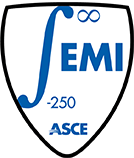Piezoaeroelastic Energy Harvesting
Virginia Tech
Problems
Aeroelastic vibrations are a common occurrence in aeronautical applications, civil structures and mechanical systems. In general, these vibrations are undesirable. On the other hand, they have been proposed as a means to harvest energy that can be used to operate low-power consumption devices, such as microelectromechanical systems, health monitoring sensors, wireless sensors, actuators or replace small batteries that have a finite life span or would require hard and expensive maintenance. Of the different options, which include electromagnetic, electrostatic, and piezoelectric transduction, the piezoelectric one has received the widest consideration because of its capability to harvest energy over a wide range of frequencies, its ease of application, and required volume. There are many challenges in designing efficient harvesters in terms of relevant power levels and high power and energy densities. These challenges are related to the nonlinearities associated with aeroelastic phenomena and the electro-mechanical coupling. In our work, we have developed modelling and analysis capabilities of piezoelectric energy harvesting systems that can be used in their design and the optimization of their performance.
Approach
Our group has considered different aeroelastic systems as possible candidates for energy harvesting. These include a wing undergoing limit cycle oscillations, vortex-induced vibrations of a circular cylinder and galloping structures. The approach in all of these applications has been to experimentally demonstrate the capability of energy harvesting, use the experimental results to validate a model representing the piezoaeroelastic energy harvester and use modern methods of nonlinear dynamics to analyze the system. This analysis is then used to optimize the performance of the system by varying its parameters.
Findings
- The eccentricity and linear and nonlinear stiffness are important factors in determining the level of harvested power from wing-based piezoaerelastic systems. The effects of variations in the electrical load resistance on the flutter speed and pitch and plunge motions are negligible. On the other hand, these variations affect the output voltage and power.
- When harvesting energy from vortex-induced vibrations, the load resistance influences the onset of the synchronization region and its characteristics. The nonlinearity associated with the vortex-induced oscillations results in a hardening behavior and hysteresis. The highest levels of harvested energy are associated with minimum displacement of the cylinder; a result that shows the need for the coupled analysis as performed in our investigations.
- The galloping phenomenon of prismatic structures offers the capability to harvest energy over a wide range of operating parameters (speed). The load resistance affects the onset speed of galloping. Also, analysis of the coupled electro-mechanical problem shows that the highest power levels are accompanied by minimal structural displacement. This is due to the fact that the kinetic energy of the structure is transferred to electrical power.
Core competencies
- Aeroelastic Systems
- Modern Methods of Nonlinear Dynamics
- Experimental Measurements
- Numerical Simulations of Fluid Structure Interactions - Different Levels of Fidelity
Current research team members
- Muhammad R. Hajj (PI)
- Abdessattar Abdelkefi (Postdoc)
- Arshad Mehmood (Ph.D. Candidate)
- Zhimiao Yan (Ph.D. Candidate)
- Samah Ben Ayed* (Ph.D. Candidate)
- Haithem Taha* (Ph.D. Candidate)
- Youssef Bichiou* (Ph.D. Candidate)
- Abdelmohsen Alothman* (Ph.D. Candidate)
- Nilma Barsallo Pacheco (MS Candidate)
- Ayesha Al-Awadhi* (MS Candidate)
*Indirectly involved in this effort.


